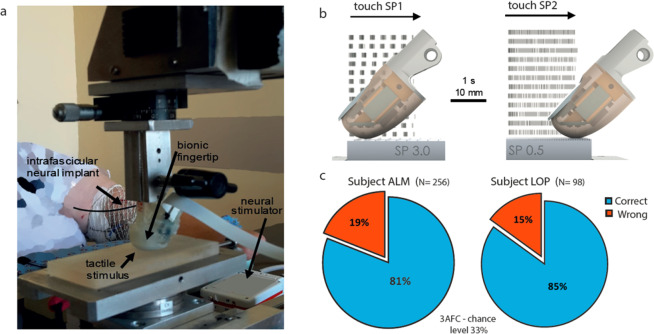Figure 1.
Neuromorphic artificial touch system encoding grating stimuli with type-1 mechanoreceptor model and performance of coarseness discrimination achieved by transradial amputees. (a) Experimental setup to evaluate the restoration of the perception of textural features in transradial amputees. (b) Transduction based on morphological neural computation (MNC) transforms the geometrical features of the surfaces into a sequence of spikes that are then delivered to the median or ulnar nerves by means of intraneural electrical stimulation. This specific illustration shows example patterns obtained with grating tactile stimuli with 3.0 mm SP1 and 0.5 mm SP2. Artificial fingertip touched the first half-grating for 2 s at 10 mm/s (20 mm sliding), followed by another tactile exploration of a second half-grating. Raster plots of the generated spikes are overlapped to the explored stimuli. (c) Overall performance achieved by the subjects in a three-alternative forced-choice experimental protocol (3AFC) of coarseness discrimination with the set of gratings described in Supplementary Table 1a.

